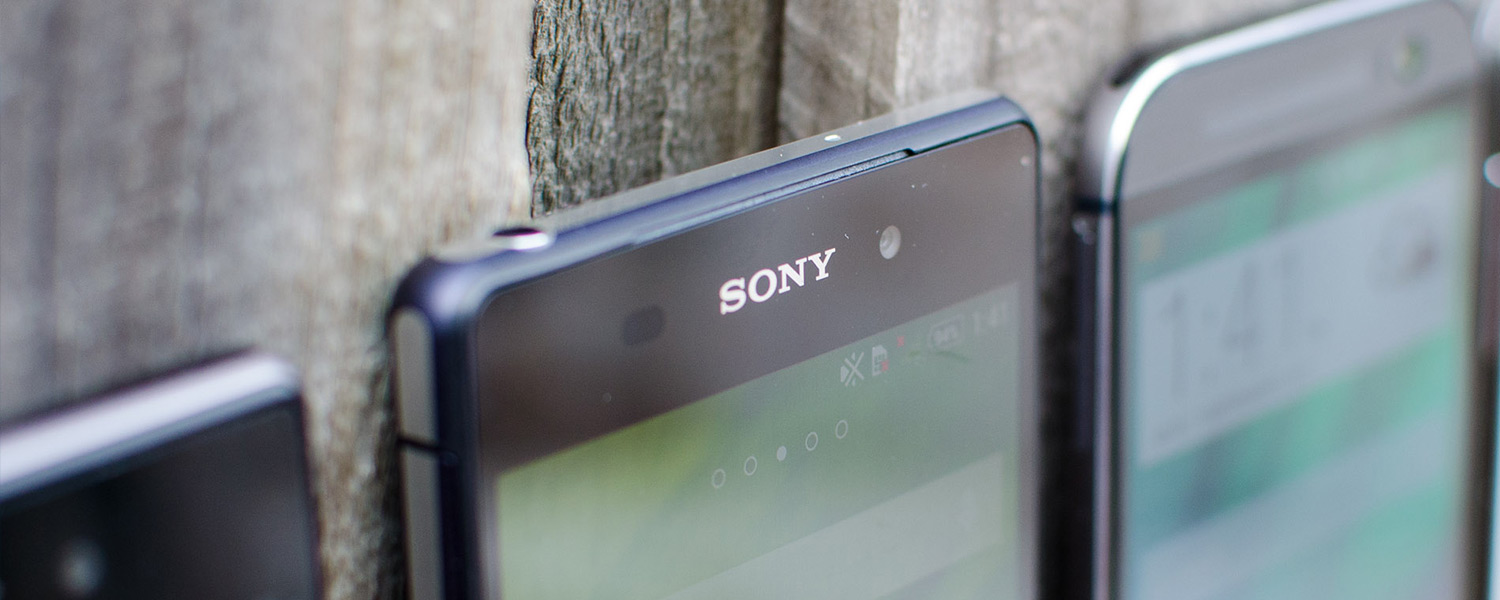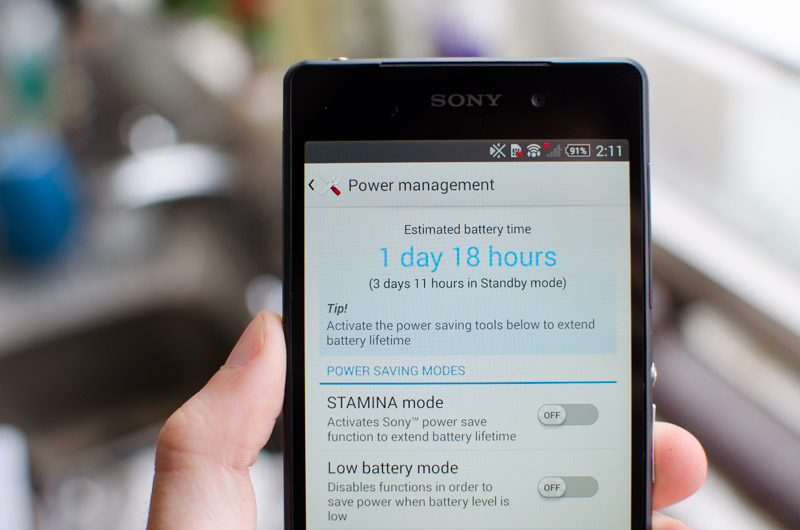Battery Life
Hidden underneath the Sony Xperia Z2's back cover you'll find a 12.16 Wh (3,200 mAh at 3.8 V) non-removable battery, which is 7% larger than what we saw in the Xperia Z1. It's also 14% larger than the Galaxy S5's removable cell, and 23% larger than the HTC One M8's battery, so we should see the best battery life from a Snapdragon 801-powered device, despite the slightly larger display.
During my general usage of the Xperia Z2, I found that the battery life was very good, easily lasting a whole day with some juice still left in the tank at the end. Like past Sony smartphones, the Z2 is well suited to surfing the internet on Wi-Fi, but comparatively doesn't fare so well with LTE networks in terms of battery life. This is something I've only really seen on Sony phones, so I assume it has something to do with their handling of networks on the software front, but it has its upsides and downsides.
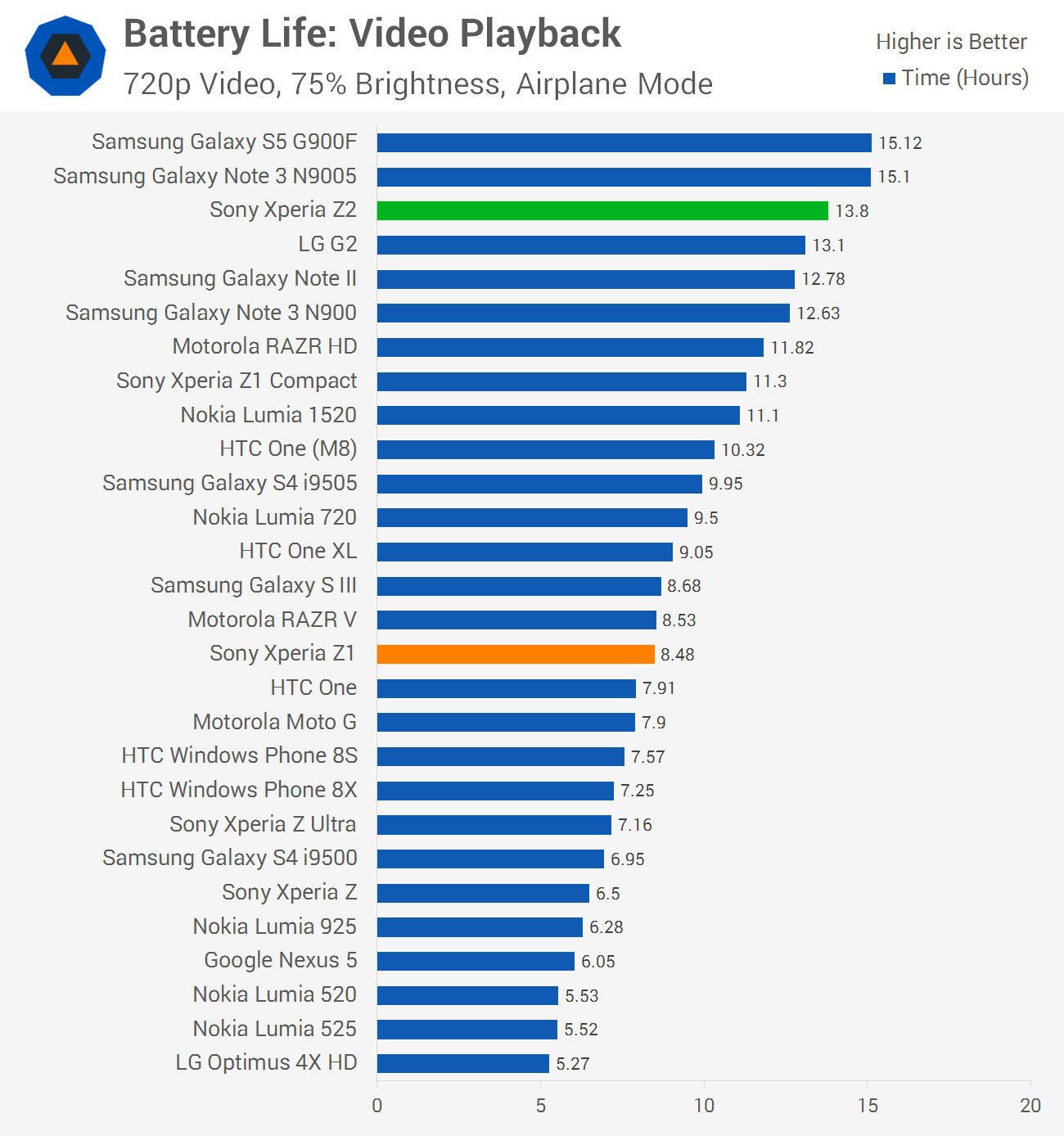
With significant efficiency improvements going into the Snapdragon 801, our video playback battery benchmark is now more of a display efficiency benchmark than a decoding one. The Xperia Z2 performs very well here: a huge 63% improvement on the Xperia Z1, also lasting 34% longer than the HTC One M8, while falling behind the Galaxy S5 by 9%.
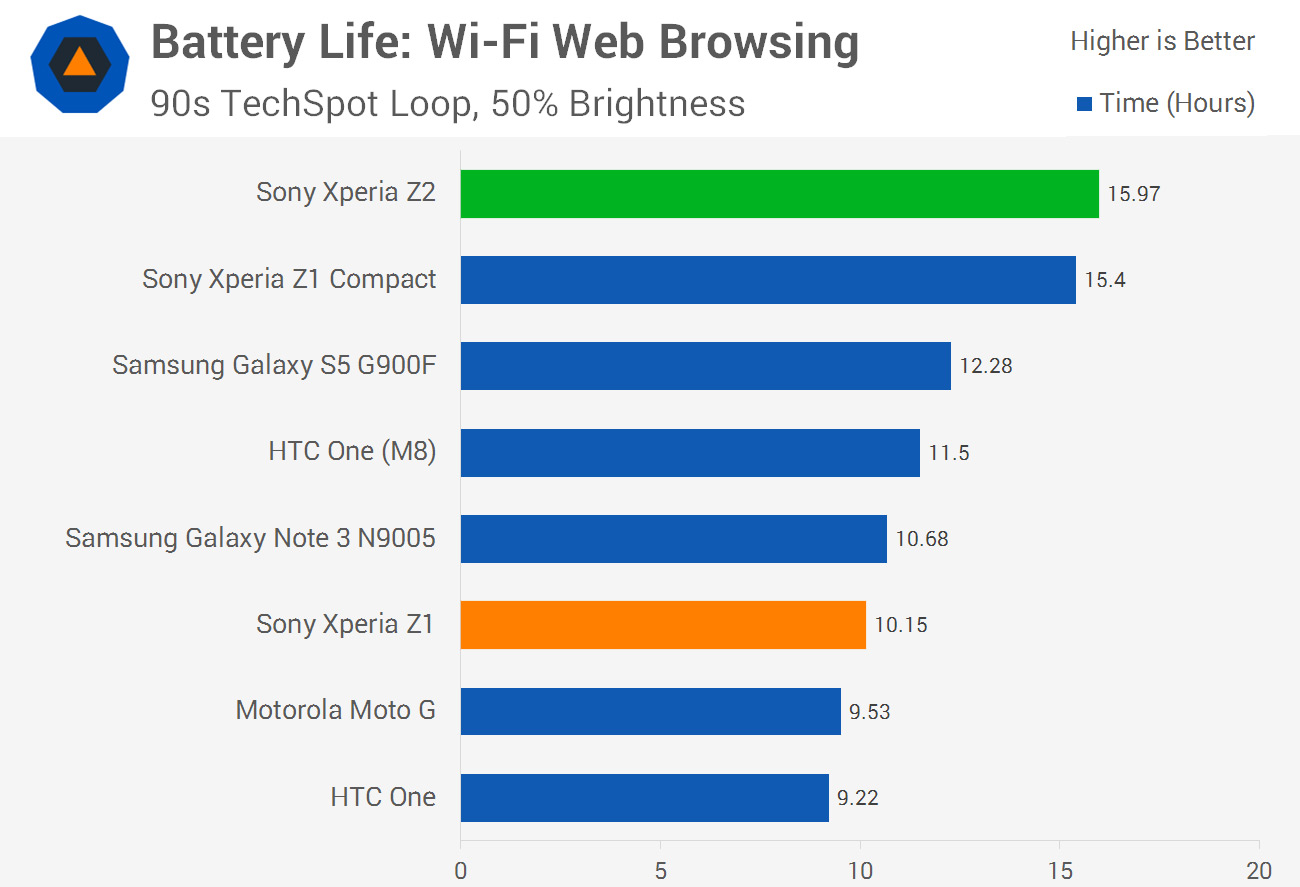
As mentioned earlier, the Xperia Z2 is a strong performer when browsing on Wi-Fi networks. Improvements to modem efficiency have seen the Z2 last six hours longer than the Z1, while also beating the Galaxy S5 and HTC One M8 by 30% and 39% respectively. It should be noted that the display is set to 50% brightness, so you should expect lower battery performance if you're outside for lengthy periods of time.
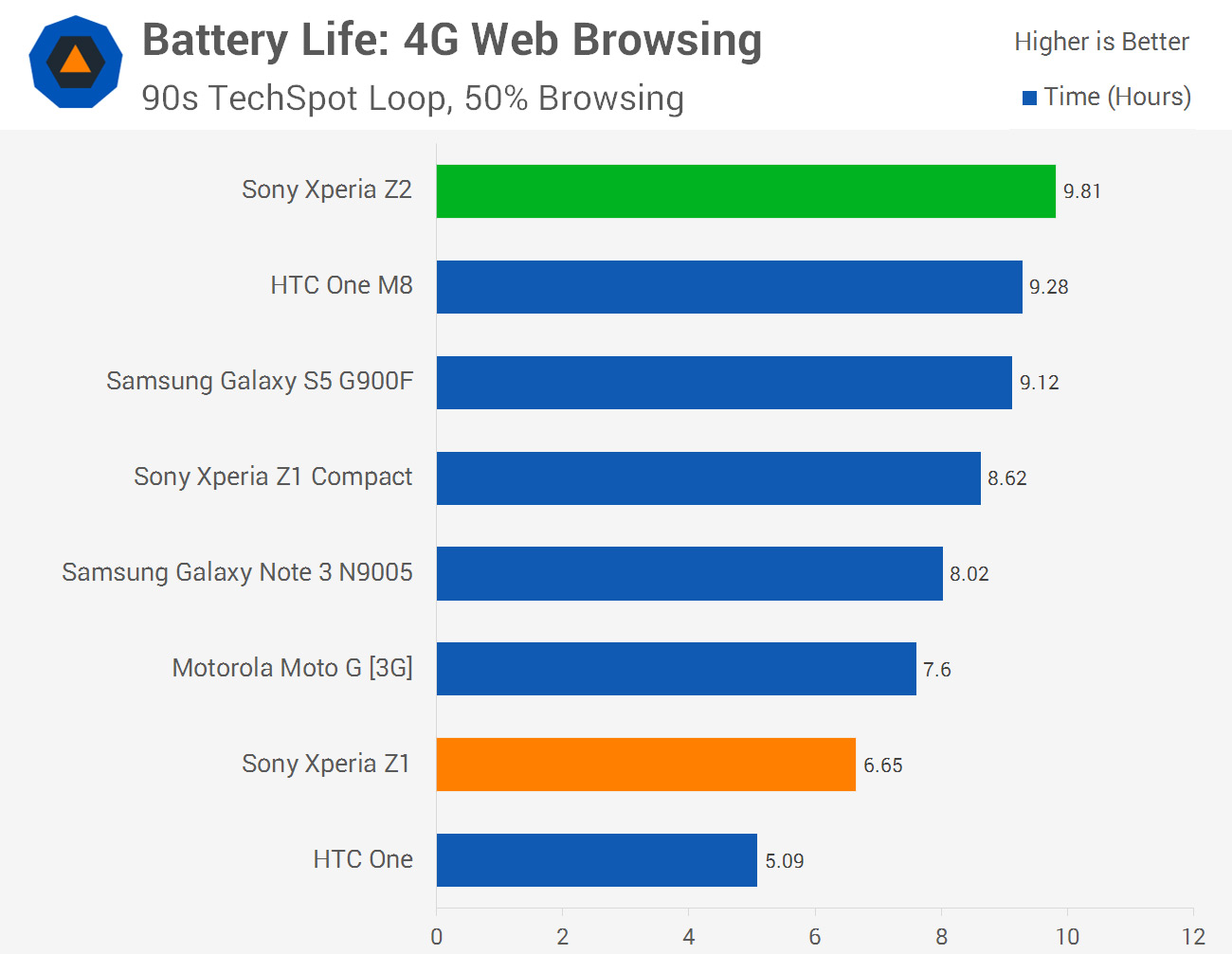
With LTE browsing, the Xperia Z2 tops the charts lasting 6% longer than the HTC One M8, and 8% longer than the Galaxy S5. You'll note here that despite good LTE performance, the Xperia Z2 battery lasts 38% less than when browsing on Wi-Fi. On the other hand, the Galaxy S5 and One M8's delta is closer to 23%.
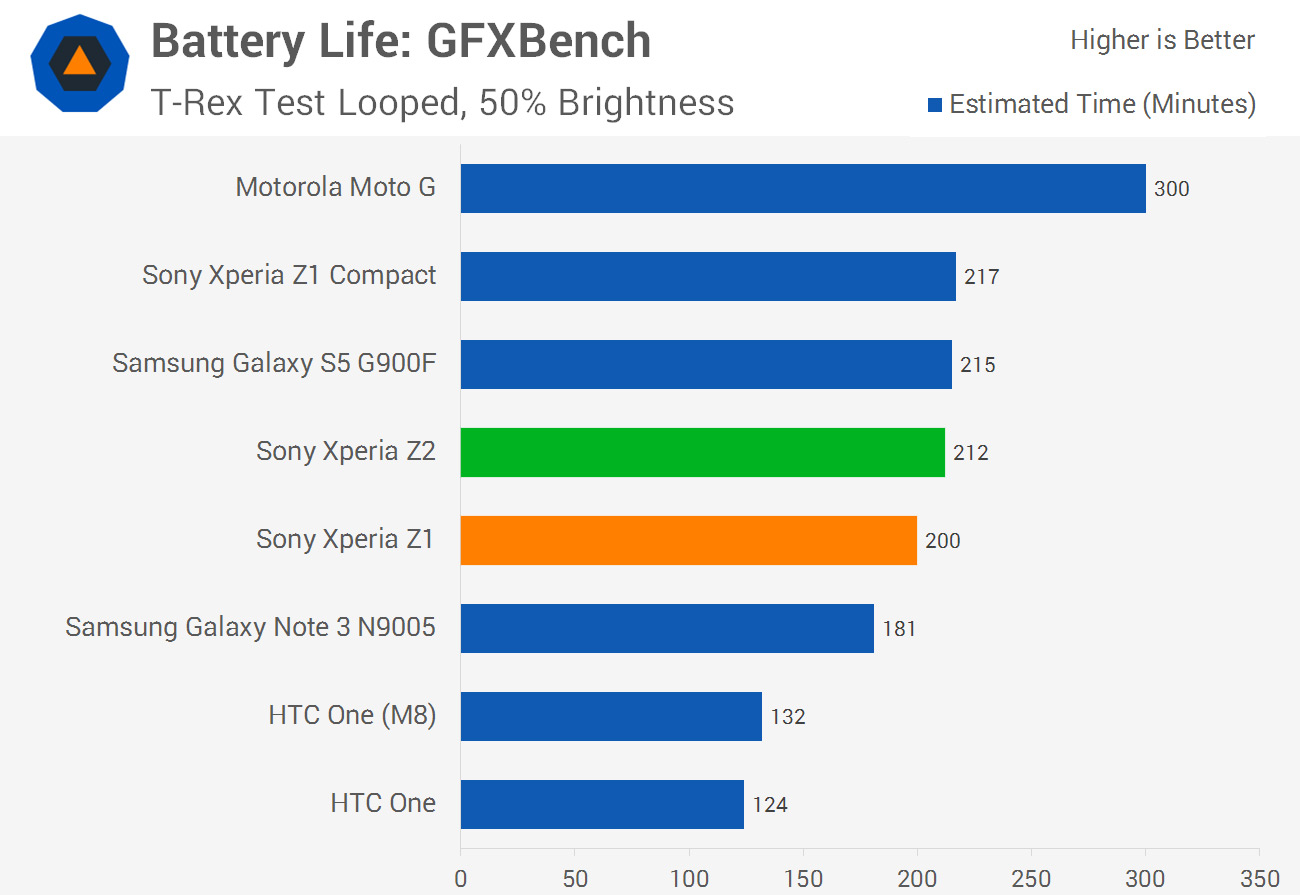
In GFXBench, the Xperia Z2 delivers battery life pretty much as I expected. It recorded an estimated intense 3D gaming time of three and a half hours, which is 6% longer than the Xperia Z1 and expected due to the 7% larger battery. The Galaxy S5 essentially records the same result as the Xperia Z2, which indicates the S5 is more efficient due to its smaller battery capacity.
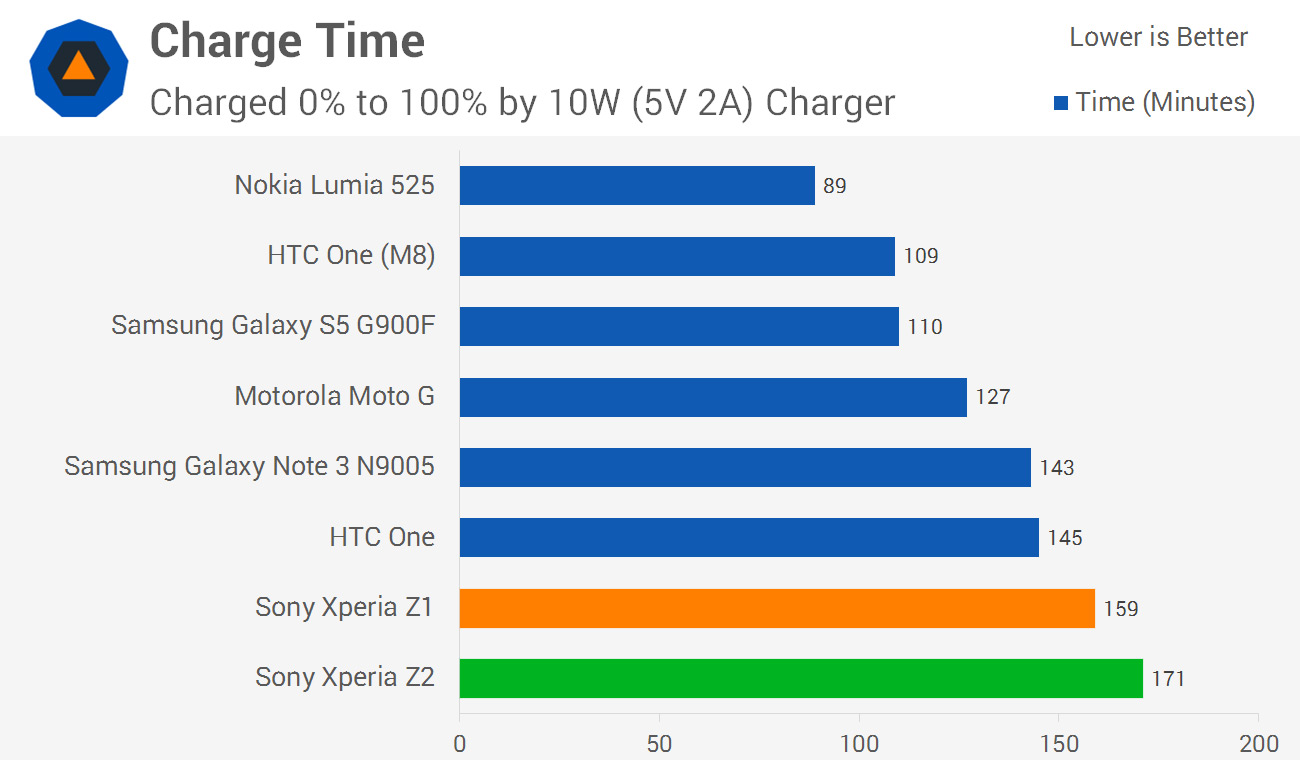
It's interesting to see Sony opting not to support Qualcomm Quick Charge 2.0 with the Xperia Z2, meaning it takes a long time to charge the handset compared to devices with similar battery capacities. From a fully flat battery to 100% charge, it took me nearly three hours to charge the Z2, a full hour longer than the One M8 or Galaxy S5. Looking at a charge log also shows that the phone charges slowly in the 95-100% zone, which contributes to such a lengthy charge time.
Like the Xperia Z1 and Z, the Z2 comes with Sony's Stamina mode, which disables Wi-Fi and mobile data while the display is off, while also suspending all running applications. Exclusions can be made if you choose, but by default this battery saving mode does an excellent job at conserving battery life. It's not as conservative as the ultra power saving modes on its competitors, but by enabling location-based Wi-Fi and low battery mode, you can still save a lot of juice.
